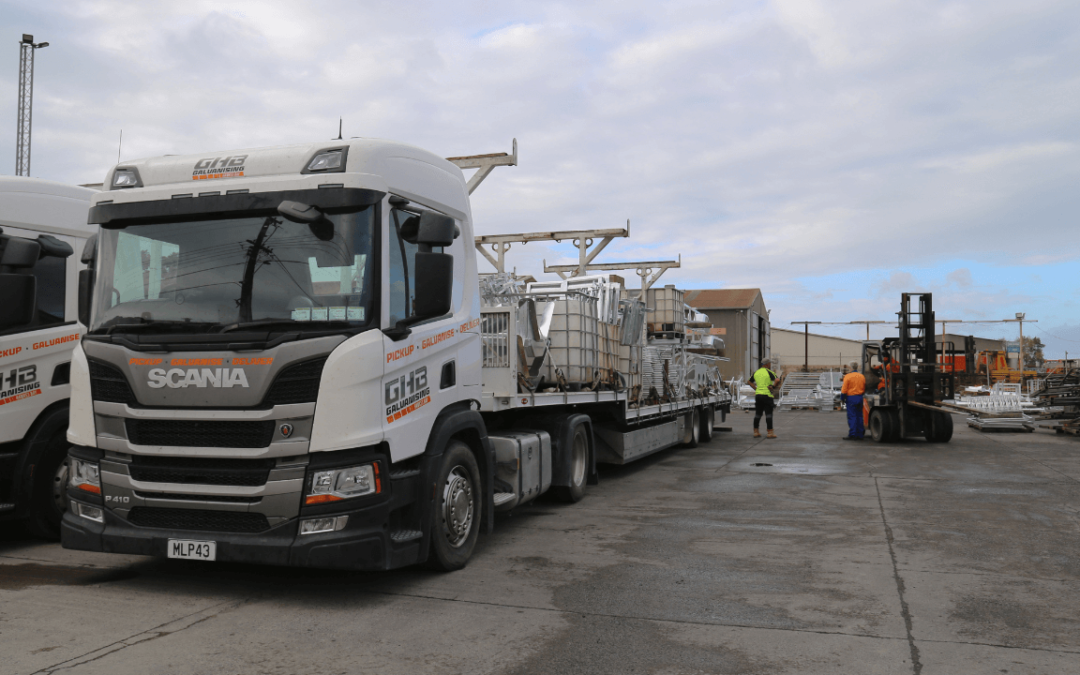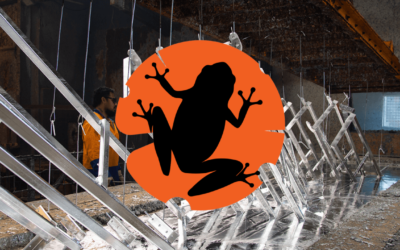The process of galvanising and protecting steel from corrosion has been around for well over 100 years now. So, it’s not surprising there are a few misconceptions that have snuck in over that time.
MYTH #1
Galvanising is very unsustainable
Many assume galvanising is unsustainable due to it’s energy and chemical requirements, but the reality is actually far more balanced than many may think.
In order to effectively galvanise and bind a zinc coat to steel, it requires heating zinc to 450°C. Like any manufacturing process this does require an energy source, however any waste heat is actually recovered to warm solution tanks to improve efficiency and reduce energy consumption.
Galvanising utilises 3 core chemical compounds namely hydrochloric acid, sodium hydroxide and zinc ammonium chloride.
- Hydrochloric acid removes rust and oxide from steel and although unknown to many is actually recyclable.
- Sodium hydroxide when used to neutralise the above acid, forms a naturally occurring compound commonly known as salt water.
- Zinc is well documented for significantly extending the lifespan of steel structures of which are fully recyclable and often much more environmentally friendly than the likes of treated timber and most plastics. The whole of life calculation over time makes galvanising very attractive.
MYTH #2
Hydrochloric Acid (HCI) is incredibly dangerous!
Yes, HCl is an acid and therefore clearly needs to be handled with care, but it’s not as menacing as it sounds.
Unlike sulphuric acid, which causes immediate burns, HCl acts differently attacking the oils in our skin, then the epidermis layer then the inner layers. With steel it consumes the rust and mill scale first then the parent steel, washing off skin readily when rinsed.
Believe it or not, humans naturally carry about 200ml of HCl in their stomachs for digestion. The industry uses anti-vapour in the HCl to reduce fumes.
MYTH #3
Double dipping for a thicker coating aids longevity
Some believe immersing steel twice in molten zinc creates a much thicker and therefore more durable coating. This however isn’t entirely accurate and, in
some cases, can have the opposite effect.
When double dipping steel the first dip forms a distinct zinc layer across the steel surface. When a second dip is carried out this however remelts part of the surface original zinc and therefore adds only
minimal thickness.
Double dipping can in fact lead to brittleness, especially in silicon-containing steels, whereas instead carefully timed single immersion produces optimal results, without compromising quality, durability, aesthetics and longevity.
MYTH #4
You can’t powder coat, or paint over galvanised steel
Once an item of steel has been freshly hot dipped zinc galvanised it is ‘quenched’ in a bath of water chromium passivation solution to retard the oxidising process.
One misconception this creates, is that as it results in a smooth finish and is therefore not suitable for Duplex paint coatings or powder coating to be used on top. This is not correct, and in fact following standards like AS/NZS 4680:2006 of whip blasting or the preferred power tool cleaning for proper surface preparation, removes oils, oxides and other greases, ensuring excellent adhesion. This subsequent process removes all traces of the ‘quenching’ effect.
MYTH #5
Galvanising is too expensive
A very well-known proverb states that ‘value is in the eye of the beholder’ and with this in mind, it really comes down to whether you choose to look at the upfront cost, or the true value over the lifetime of the item being either galvanised or coated.
While upfront costs might seem a bit higher, galvanising is proven to deliver much greater longer-term value when viewed alongside other coating alternatives. Coating options, like paint or powder coating, are more likely to require frequent
reapplications to try achieve the same degree of longterm corrosion protection.
MYTH #6
Tapping holes after galvanising should be easier as zinc is soft
Although we can appreciate why this may seem like the logical option, this misconception overlooks the metallurgical complexity of galvanising.
Once a zinc layer is applied the gamma layer (the initial layer between the raw steel and the outer zinc surface layer) this new alloy composition is around 30% harder than the parent steel. This makes it slightly more challenging when re-tapping holes
(more than expected for the softer zinc metal).
MYTH #7
Galvanising chips off easily
Although zinc can in fact chip off, it doesn’t do so easily and is normally due to poor handling and care rather than the galvanising process itself.
Possible cause off this can include:
- Rough handling during transportation, loading/ unloading or installation.
- Sharp corners creating excessive zinc build-up.
- Overcooking in the zinc bath resulting to uneven layers.
Note: - Hot dip galvanising is a metallurgic bond providing superior adhesion of around 26 mPa.
- Paints applied by whip blasting or mechanical cleaning deliver around 8-9 mPa by pull off test at best.
MYTH #8
Galvanising should always be shiny
Shine is not an indicator of quality but rather steel composition and two steel types in the same process can yield different finishes and shine.
Steel with varying silicon content reacts differently, influencing appearance and coating thickness. For anyone keen to find out more about this we suggest you look into the research results referred to by observing the Sanderlin Curve.
MYTH #9
Galvanising weakens steel
This is 100% inaccurate, and in fact scientifically, galvanising has been well proven to enhance corrosion protection without compromising the structural integrity of steel.
Although the steel is heated up to 450°C during the galvanising process this does not alter its core properties, and its strength characteristics are returned after the immersion in molten zinc.
The galvanising process adds a few additional alloying layers on top of the steel providing additional strength. The overall galvanising process helps to partially normalise the steel improving fatigue cycle.
Check out our latest articles
Why Double Dipping In Galvanising May Not Mean What You Think It Does
One of the most common requests from people not overly familiar with galvanising sounds simple enough at face value, however, is not as straight forward as it might seem: “Can you double dip our steel to give it a thicker and more heavy-duty coating?”
How A Twitching Frog’s Leg Sparked A Revolution In Galvanising!
Who would’ve thought a twitchy frog leg could lead to one of the most enduring industrial innovations of all time? Hot dip galvanising, the robust process that has protected steel for over 180 years, owes part of its origin story to the curious observation of a frog’s post-mortem jig.


